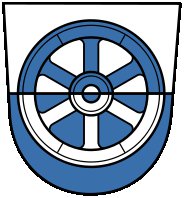
Does the top of a rolling wheel move faster than the bottom? In his Cyclopedia of Puzzles (1914), Sam Loyd calls this “an old problem which has created a considerable discussion in the mechanical world.”
The rolling wheel retains its shape; it will arrive at its destination as a connected unit. This seems to imply that all of its parts are moving at the same speed. Yet the point in contact with the ground is moving not at all, while the top continuously overtakes it. Surely, then, the top is moving faster? “There is just enough of the mathematical and mechanical element in the make-up of the problem,” writes Loyd, “to provoke discussions from such as are well-up on these subjects.”
His answer: “The top of a wheel progresses exactly as fast as the bottom.” And, being Sam Loyd, he adds a wrinkle: “If the question referred to a mark on the tire the answer would be different, for the top is the highest point of the wheel and cannot revolve, for if it revolves the hundredth part of an inch it ceases to be the top.”
A second vexed wheel riddle; William James and Lewis Carroll consider related questions; a train moves simultaneously east and west.
